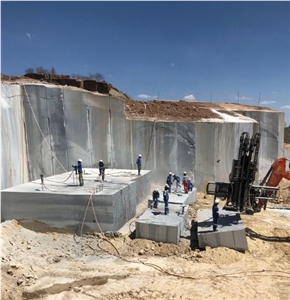The Hidden Treasures: Exploring Granite Quarries in South Africa
The Hidden Treasures: Exploring Granite Quarries in South Africa
Blog Article
Unearthing the Rich Background and Lasting Practices of Granite Quarrying
As we base on the precipice of uncovering the intricate tapestry of granite quarrying, a journey via time exposes not just the physical act of removing rock but likewise the social and historical relevance woven right into the really fabric of this method. From the old beginnings that laid the structure for modern quarrying techniques to the sustainable techniques that are forming the future of this sector, each sculpt mark on granite surface areas narrates waiting to be discovered (granite quarries in south africa). The tradition of granite quarrying extends much past simple extraction; it is a testament to human ingenuity, strength, and the long-lasting appeal of this majestic stone
Ancient Beginnings of Granite Quarrying
Dating back to ancient people, the practice of quarrying granite has been an indispensable part of human history and architectural development. The earliest proof of granite quarrying days back to ancient Egypt, where massive pyramids and complex sculptures were crafted from this resilient stone. The Egyptians made use of primitive tools to draw out granite blocks from quarries, showcasing the relevance of this material in their monumental buildings.
Moving on in history, the Greeks additionally made significant contributions to the quarrying of granite. The Greeks utilized granite in numerous building marvels, such as temples and statuaries, demonstrating their skill in shaping and sculpting this sturdy stone. The Romans further fine-tuned the methods of quarrying granite, using innovative tools like chisels and hammers to essence and shape granite for their renowned structures.
With the centuries, the technique of quarrying granite has developed, with modern technologies improving performance while keeping the classic charm of this all-natural stone - granite quarries in south africa. From ancient people to contemporary contractors, the heritage of granite quarrying remains to shape our world
Evolution of Quarrying Techniques
The development of quarrying methods has been noted by a continuous development towards higher performance and accuracy in extracting granite. Early quarrying techniques entailed hand-operated labor with standard tools such as knives, hammers, and wedges to remove granite blocks from the earth.
In more recent times, the advent of machinery revolutionized the quarrying industry, enabling much faster extraction prices and boosted efficiency. Technologies such as diamond wire saws, high-pressure water jets, and pneumatically-driven drills have ended up being common in modern quarries, permitting specific cutting and decreased waste. Advancements in computer-controlled devices and 3D modeling have optimized Check This Out quarrying operations, leading to very little environmental impact and improved sustainability practices. As the demand for granite continues to rise, the advancement of quarrying methods remains important to meeting sector requires efficiently and sustainably.
Cultural Value of Granite
Granite holds an extensive cultural relevance across numerous worlds as a result of its long-lasting existence in architectural work of arts and respected monuments. From the stunning pyramids of Egypt to the complex makings of the Angkor Wat temple in Cambodia, granite has been a material of choice for sharing splendour and longevity in social heritage. In old Rome, granite columns adorned temples and public structures, representing toughness and durability. The social relevance of granite prolongs past its physical attributes; it embodies durability, security, and eternity, making it a symbol of enduring heritages and practices.

Lasting Practices in Quarrying
Amidst the abundant history of granite quarrying and its social importance lies an expanding focus on lasting methods within the industry. As ecological understanding and concerns about resource deficiency have enhanced globally, the quarrying market has actually increasingly embraced lasting approaches to decrease its influence on the atmosphere and bordering communities.

Additionally, improvement and recovery of quarry sites post-extraction are important to lasting methods. By restoring quarried areas to page an all-natural or valuable state, such as developing wild animals environments or leisure areas, quarriers can balance out the ecological footprint of their operations and contribute positively to the local ecosystem.
Tradition of Granite Quarrying
With a historic backdrop soaked in craftsmanship and industrial development, what sustaining effect has granite quarrying left on the landscape of modern-day society? The legacy of granite quarrying goes beyond plain removal methods; it has actually shaped architectural wonders, city landscapes, and social heritage worldwide. The long lasting nature of granite has made it a favored choice for monuments, structures, and facilities, standing as from this source a testament to the skill and creativity of quarry workers across generations.
Moreover, the financial footprint of granite quarrying can not be forgotten. The market continues to supply employment possibilities and drive neighborhood economies in areas where granite removal prevails. It has additionally stimulated technical innovations in quarrying techniques and devices, bring about more effective and sustainable methods.
In terms of sustainability, the legacy of granite quarrying includes initiatives to minimize environmental influences with recovery tasks and responsible resource administration. By stabilizing economic passions with environmental stewardship, the sector makes every effort to ensure that future generations can remain to take advantage of this long-lasting all-natural source.
Conclusion

Report this page